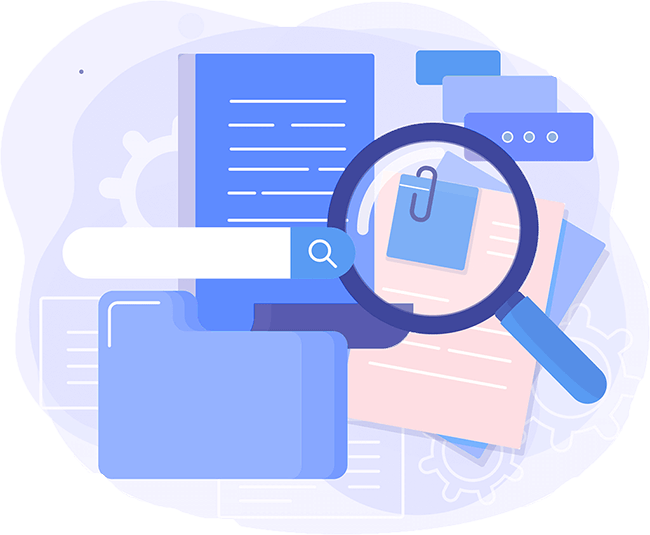Self Service Kiosks were introduced into Housing Client Service Centres in 2016 through the Housing Connect program. The Housing Connect program is part of larger government reform piece, to digitise public services and improve customer experiences across NSW. As facsimile machines and paper forms become increasingly outdated, the Department was under pressure to provide clients with a simple and effective method for accessing Housing services. The implementation of online forms and the provision of Self Service Kiosks in Housing Service Centres (HSC) drastically decreased the long queue times customers experienced and, in addition, reduced the need for clients to present themselves to a HSC for assistance. Prior to the reform, there was only two methods of for accessing Housing services – by phone or in person in a HSC. The reform is intended to allow clients virtual access to Housing services and is aimed at providing public value and in addition, demonstrate the department’s commitment to remain relevant with the pressures of the evolving local and global advancements in the delivery of government services through the use of technology. This paper will critically analyse the reforms impact on public value and the management strategies to ensure government accountability and responsiveness in an emerging global market of digital innovation.
Don't use plagiarized sources. Get Your Custom Essay on
Digitising Housing Services in Australia through Self Service Kiosks
Just from $13/Page
Get Help With Your Essay
If you need assistance with writing your essay, our professional essay writing service is here to help!
Essay Writing Service
The concept of public value is discussed by many academics; however, the underpinning foundations are very similar. Moore’s Strategic Triangle (Moore, 1995), states there are three main areas the public sector must meet. “It must: (1) be aimed at creating something substantively valuable; (2) be legitimate and politically sustainable; and (3) be operationally and administratively feasible” (O’Flynn, 2015, p. 4). Some may see the Strategic Triangle concept as somewhat outdated as it is missing one key element that the public sector is frequently scrutinized over and that is performance. Historically, performance in the public sector has been rarely measured, but nowadays citizens want transparency and seek to measure how the public sector is performing against outcomes.
The Housing Connect business case describes in detail the management strategies required to implement the reform including change management, resources, costs, time and also outlines the three primary factors which affect a best-practice public service strategy: “1) Policy and planning – why we serve customers; 2) Customer segmentation – who are the customers and what are their needs; 3) Channel strategy – how to effectively reach customers” (Department of Family and Community Services, 2014). The strategy is aimed at delivering more digital services to the customers located in urban, regional and remote areas across NSW. Based on data collection of their customers, they have been able to ascertain that 84% of customers have a mobile phone with more than 50% having access to the internet at home. Whilst the reform is aimed at reaching as a many customers as possible, what it doesn’t mention is the elderly population customer base that have limited knowledge or limited access to digital technology. Although this only makes up a small portion of customers, there is evidence that the elderly population have concerns with the use of new technology. In a 2017 study, the elderly identified a number of barriers and disadvantages that can be perceived to outweigh the advantages of digital technology (Eleftheria Vaportzis, 2017). In order for the department to reach the elderly population, the Department will have to maintain provision of traditional service methods such as telephone and face-to-face services.
There are other high risks to the reform that include; customer acceptance of the technology, delivery capacity and change management. Drawing on Moore’s Strategic Triangle (Moore, 1995) theory and aligning the risks to the Strategic Triangle can assist in identifying the risk mitigation strategy. Customer acceptance aligns to Value, and the risk mitigation actions include lessons learned from other e-services and providing incentives for customer that accept and use the new technology. Delivery Capacity aligns to Operational Capabilities, which requires a stakeholder impact review to understand resources and training needs. Change Management is aligned to Legitimacy and Support, whichrequires support from ICT and project board establishment. The use of Moore’s Strategic Triangle to identify the risk mitigation strategies is an approach that can be adopted for not only risk but a range of various criteria’s requiring evaluation against public value.
All over the world governments are moving towards an electronic government (e-Government) model. E-Government is defined as “the use of information and technology to support and improve public policies and government operations, engage citizens, and provide comprehensive and timely government services” (Schnoll, 2010). An example of best practice is Estonia. According to the Digital Economy and Society Index Report 2018 (European Commission, 2018), the Estonian government boasts that 99% of public services are available online 24/7. The main findings from the Estonian citizen satisfaction survey directed at public e-services state “71% of internet users are on the whole satisfied with the offered e-public services. The majority of them agree that e-services have helped them save time (87%) and enabled them to get more information (85%)” (Information System Authority, 2014). These numbers validate that adoption of the e-Government model delivers on public satisfaction which has significant links to public value.
The Australian government was an early leader in the global e-Government trend peaking in 1999, “however, in the global context, Australia has now fallen behind and has so far failed to adopt an integrated approach to e-government that joins up all government services across all three tiers of government” (Arvo Ott, 2018). This is largely due to the three tiers of government and the requirement to decentralise ICT infrastructure across the all levels of government. Whilst the government is committed to digital transformation and can already be seen adopting the use of digital innovation, Iain Kearns points out that “When it comes to allocating funds to ICT and e-government projects, the government consistently funds ICT itself while under-funding the business change required to ensure that ICT is part of a wider strategy of service improvement.” (Kearns, 2004, p. 38). This theory appears to be supported given the three strategic objectives of the Government’s Digital Transformation Strategy (DTS) vision for 2025 published in 2018; “Government that’s easy to deal with, Government that’s informed by you, Government that’s fit for the digital age.” (Australian Government, 2018, p. 13). The strategy states that “To deliver on these expectations and achieve our 2025 vision, we need to uplift our digital skills and capabilities and partner with innovative organisations to deliver the right outcomes” (Australian Government, 2018, p. 39). One could read the strategy objectives as a commitment to ICT infrastructure only with no links to service improvement. On the other hand, the strategy demonstrates that the government is responding to the global advancements in technology and the need to remain relevant, responsive and more accessible to citizens.
Australia’s population has been growing steadily over the last decade and it is “estimated that the resident population at 30 June 2017 of 24.6 million people is projected to increase to between 37.4 and 49.2 million people by 2066” (Australian Bureau of Statistics, 2018). The Morrison Government openly recognises this as a problem and announced on 20 March 2019, that they would “tackle the impact of increasing populations by reducing the migration cap from 190,000 to 160,000 places and plan for a more evenly distributed population growth” (Prime Minister of Australia, 2019). With a growing population comes demands for more goods and services, and although it is frequently argued “that immigrants are a significant drain on government resources and major studies have shown that at a Commonwealth level, costs of settlement services, English language provisions, unemployment and other social security benefits exceed the revenue generated by new immigrants” (Williams, 1995, p. 8), all citizens of Australia access public services at some point throughout their lives. In an environment where the population is growing and the government plans to disperse citizens into regional areas, it is imperative that the government is responsive and accessible for citizens in remote and regional areas.
There are numerous benefits to adopting the e-Government model as described in detail by Iain Kearns in Public Value and E-Government (Kearns, 2004). Not only will it create and measure public value, the government can expect to benefit from significant cost reductions and efficiencies. “Face-to-face transactions are estimated to be 84.1 million per year with a cost per transaction of $16.90. The cost per transaction for an online service is $0.40” (Deloitte , 2015). E-Government will not only reduce costs to the government, it will also reduce the margin of human error allowing public servants to operate more efficiently and effectively. It will benefit citizens as trust levels rise as the government improves reliability and responsiveness. As digital transactions develop and become quicker, more reliable and convenient, it will quickly be the preferred method for citizens to access public services.
The department’s reform to digitise Housing services signifies the government’s endeavours to be more responsive and accessible for all consumers. It also signifies that the department is openly examining better ways to deliver services to increase public value. The global effects of e-Government have had a clear impact on how public services are delivered and with a growing population, the department is demonstrating accountability by considering innovative ways of meeting consumer demands through the use of technology. The digitisation of Housing services is an appropriate method to deliver Housing services to a broad range of customers located throughout NSW. The implementation of digitised public services, more widely across the country, will allow citizens instant access to a range of online government services from their mobile device or from the comfort of their own home.
References
Arvo Ott, F. H. (2018). Introducing integrated e-government in Australia. The Australian Strategic Policy Institute Limited.
Australian Bureau of Statistics. (2018, November 22). Australian Bureau of Statistics. Retrieved from Australian Bureau of Statistics: https://www.abs.gov.au/AUSSTATS/abs@.nsf/mf/3222.0
Australian Government. (2018). Vision 2025. Digital Transformation Agency.
Deloitte . (2015). Digital government transformation. Sydney: Deloitte Access Economics.
Department of Family and Community Services. (2014). Housing Connect Program Business Case 2014 v2.3 – FInal . HCP – Business Case 2014 v2.3 – FInal . New South Wales, Australia: Department of Family and Community Services.
Eleftheria Vaportzis, M. G. (2017). Older Adults Perceptions of Technology and Barriers to Interacting with Tablet Computers: A Focus Group Study. Front Psychol, 20.
European Commission. (2018). Digital Economy and Society Index (DESI) 2018 Country Report Estonia. Digital Single Market.
Information System Authority. (2014). Estonian populations’ satisfaction with public e-services 2014. AS Emor.
Kearns, D. I. (2004). Public Value and E-Government. London WC2E 7RA: Institute for Public Policy Research.
Moore, M. (1995). Creating Public Value: Strategic Management in Government. National Journal .
O’Flynn, J. A. (2015). Public Value: A Stockade of a Concept. Public Value: A Stockade of a Concept, 25.
Prime Minister of Australia. (2019, March 20). Prime Minister of Australia. Retrieved from Prime Minister of Australia: https://www.pm.gov.au/media/plan-australias-future-population
Schnoll, H. J. (2010). E-Government: Information, Technology, and Transformation. New York: M.E.Sharpe.
Williams, L. S. (1995). Making Multicultural Australia. Understanding the Economics of Immigration, 17. Retrieved from http://www.multiculturalaustralia.edu.au/doc/williams_1.pdf







